By dumping sand to nourish the sacrificial beach, the amount of sand that is compensated will create sandbanks and thanks to the wave regime, the natural flow will evenly distribute the sand over the entire area, compensating for the erosion. This is a long-term solution to prevent coastal erosion in Hoi An that is being implemented by the People's Committee of Quang Nam province through a loan from the French Development Agency (AFD) and non-refundable aid from the European Union (EU).
Dr. Claus Pedersen - Chief Consultant of the Danish Hydraulic Institute (DHI) discussed fundamental solutions to prevent erosion and sustainably protect Hoi An's coastline.
PV: The assessment report of the Hydrometeorology Magazine published on April 25, 2022 said that Cua Dai beach has lost up to 112 hectares of land due to erosion (data recorded from 2016-2022) and this erosion tends to increase.
How do you evaluate the causes of coastal erosion in Hoi An in recent years?
Dr. Claus Pedersen: After many years and many rounds of research, we found that the first cause of coastal erosion comes from the upstream area. Previously, the Vu Gia - Thu Bon river basin was a significant source of alluvium for the estuary and adjacent shorelines. The construction of hydroelectric dams and other river control works has reduced the sand supply to the coast.
Coarse-grained sediment from the river will be deposited in the delta area, through natural transport and dynamic processes (wave regime, tidal surge and river flows), transported along the northern and southern shores of the river mouth. The amount of sediment supplied to the river mouth is reduced due to upstream reservoirs. Erosion occurs due to the reduction in sediment delivery to the shoreline.
[caption id="attachment_425430" align="aligncenter" width="768"]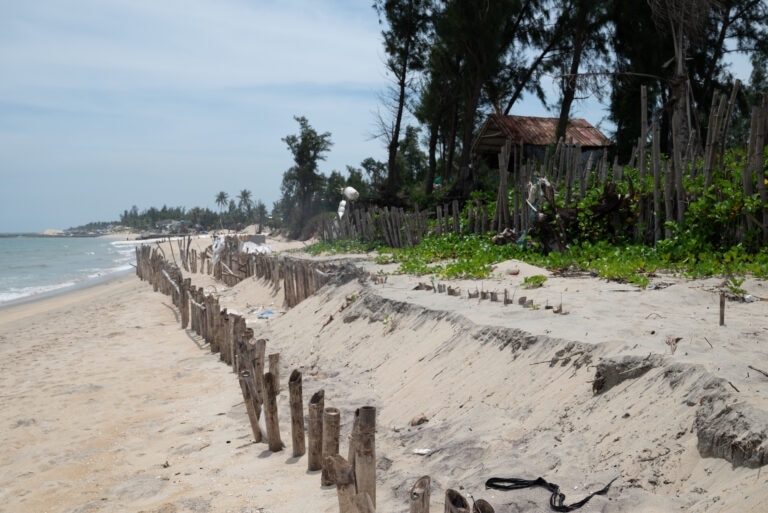 Many solutions to prevent erosion at Cua Dai beach (Hoi An, Quang Nam province) have been implemented. Photo: Pham Nga[/caption]
Many solutions to prevent erosion at Cua Dai beach (Hoi An, Quang Nam province) have been implemented. Photo: Pham Nga[/caption]PV : What solutions have been proposed to ensure the best for Hoi An's coastline, sir?
Dr. Claus Pedersen: As analyzed above, the Hoi An coastline is systematically eroded due to the lack of sand and mud from the Vu Gia – Thu Bon river system flowing into the sea. Therefore, the long-term solution is to solve the root problem: the imbalance of sand and mud transport. Currently, many private enterprises have tried to protect their assets by building their own hard protection works, but they are limited to a specific area. These works are localized, not only ineffective in protection but also unstable and unsafe in the long term.
The main problem now is the lack of sand from upstream, so we must have a solution to compensate for the sand supply by dumping sand to nourish the sacrificial beach and nourish the beach every year. The amount of sand that is compensated will create sand beaches and thanks to the wave regime, the natural flow regime will distribute the sand evenly over the entire area, compensating for the erosion. That is a long-term solution.
PV: Can you further analyze the method of beach maintenance?
Dr. Claus Pedersen: The advantage of beach nourishment over structural protection is that it addresses the fundamental shortage in sediment supply that is the root cause of coastal erosion. In this way it reduces the erosion risk for the entire coastline from the nourishment area towards the northwest towards Da Nang. It is therefore a comprehensive regional measure rather than a local one. Sand nourishment regenerates and maintains beaches. It is not only the best and most natural way to dissipate wave energy and protect coastal assets, but also the most important asset for tourism along the entire coastline.
In contrast, structural protection only addresses the problem locally and pushes erosion further northwest. With structural protection, beaches are often lost, and over time, this hard protection becomes increasingly vulnerable to sea attack and becomes very expensive to maintain.
[caption id="attachment_425524" align="aligncenter" width="768"]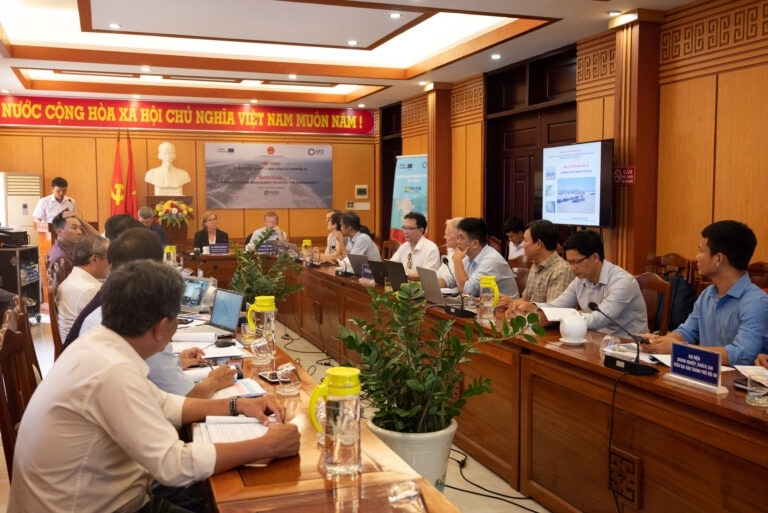 Workshop on “Strategy for sustainable management of Hoi An coast” co-organized by Quang Nam Provincial People’s Committee and AFD on September 9. Photo: Pham Nga[/caption]
Workshop on “Strategy for sustainable management of Hoi An coast” co-organized by Quang Nam Provincial People’s Committee and AFD on September 9. Photo: Pham Nga[/caption]Sacrificial beach nourishment also has the advantage of adapting to the impacts of climate change. As long as there is enough sand in the system, beaches will adjust in elevation with rising sea levels to protect against erosion and flooding. Structural protection measures are fixed in height and adapting to the impacts of climate change requires additional structural protection.
There are two main challenges with sacrificial nourishment: ensuring a sustainable sand source and ensuring the maintenance of the required beach nourishment program.
In terms of sand resources, dredging of shipping channels is a major source as this is sand that would have been naturally supplied to the northern beaches but is now occupied by shipping channels. This may not be sufficient and therefore offshore sources of sand of suitable quality should be sought and exploited within acceptable environmental impacts.
To ensure the long-term sustainability of sacrificial beach nourishment, we strongly recommend the establishment of adaptive monitoring and management systems where regular monitoring will inform timely implementation of beach nourishment campaigns to ensure beaches are maintained.
Cost-wise, this beach nourishment approach is cost-effective for the same purpose of protecting assets and maintaining high quality amenity beaches.
PV: How will the project solve the problem of preventing erosion while preserving the value of resources such as mangrove forests, seagrass beds, etc.?
Dr. Claus Pedersen: Coastal erosion control measures are solved naturally to restore the sediment balance and let the natural beaches protect the coastline. The mangroves and seagrass beds are located in the estuary and will not be affected by the beach nourishment activities that mainly take place along the coastline in the southeast of An Bang beach area. Beach nourishment helps to re-establish the balance in sediment transport volume.
PV: Thank you very much!The Hoi An Coastal Erosion Prevention and Sustainable Protection Project, which the Quang Nam Provincial People's Committee is the managing unit, in coordination with the Project Management Board for Investment in Construction of Agricultural and Rural Development Works, is invested from a loan of 35 million Euros from AFD and a non-refundable aid of 2 million Euros from the European Union through the Water and Natural Resources Management Fund (WARM Facility). The project consists of three components: Combining protection works (underwater breakwaters and groynes) and sand filling for beach nourishment on a 5,000m stretch of coastline from Cua Dai to Victoria Hotel. Apply a comprehensive approach to the entire coastline from Son Tra to Tam Hai: Integrated Coastal Zone Management (ICZM) and Integrated Shoreline Management Plan (ISMP) to implement annual sand dumping activities at Hoi An beach. Fill the sacrificial sand nourishment in the extended area of the northern shore from the northern project boundary to address the imbalance in sediment transport to the northern part of the coastal strip. It is expected that the design and construction bidding work will be implemented in the first quarter of 2024. |
Thanh Luan



![[Photo] General Secretary To Lam receives Chief of the Central Office of the Lao People's Revolutionary Party](https://vphoto.vietnam.vn/thumb/1200x675/vietnam/resource/IMAGE/2025/5/30/140435f4b39d4599a3d17975dfb444c5)
![[Photo] National Conference "100 years of Vietnamese Revolutionary Press accompanying the glorious cause of the Party and the nation"](https://vphoto.vietnam.vn/thumb/1200x675/vietnam/resource/IMAGE/2025/5/30/1cf6cd5c8a934ebfa347028dcb08358c)

![[Photo] A delegation of 100 journalists from the Vietnam Journalists Association visits the soldiers and people of Truong Sa island district.](https://vphoto.vietnam.vn/thumb/1200x675/vietnam/resource/IMAGE/2025/5/30/0984a986227d4e988177f560d2e1563e)
![[Photo] Journalists moved to tears at the Memorial Service for the soldiers who died in Gac Ma](https://vphoto.vietnam.vn/thumb/1200x675/vietnam/resource/IMAGE/2025/5/30/9454613a55c54c16bf8c0efa51883456)








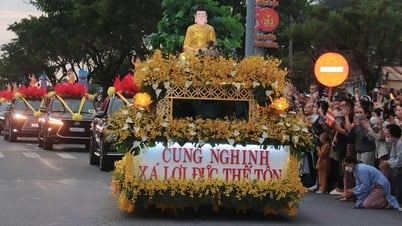






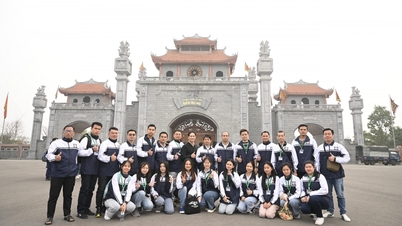


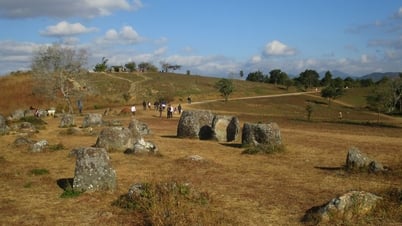











































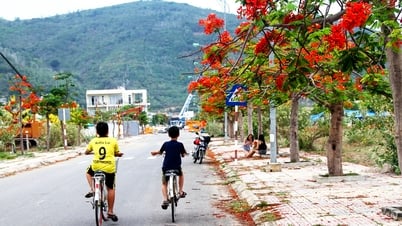



















Comment (0)